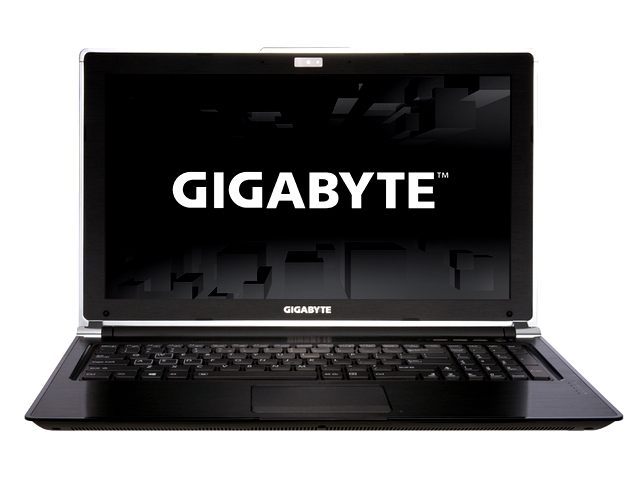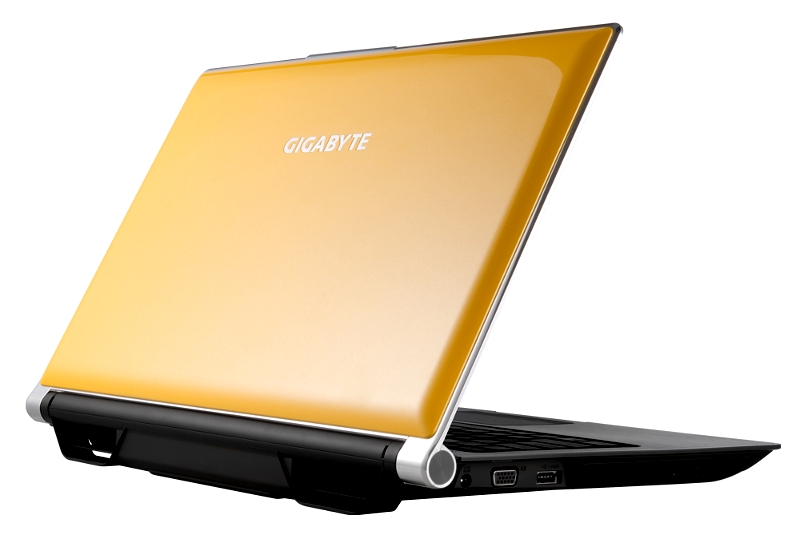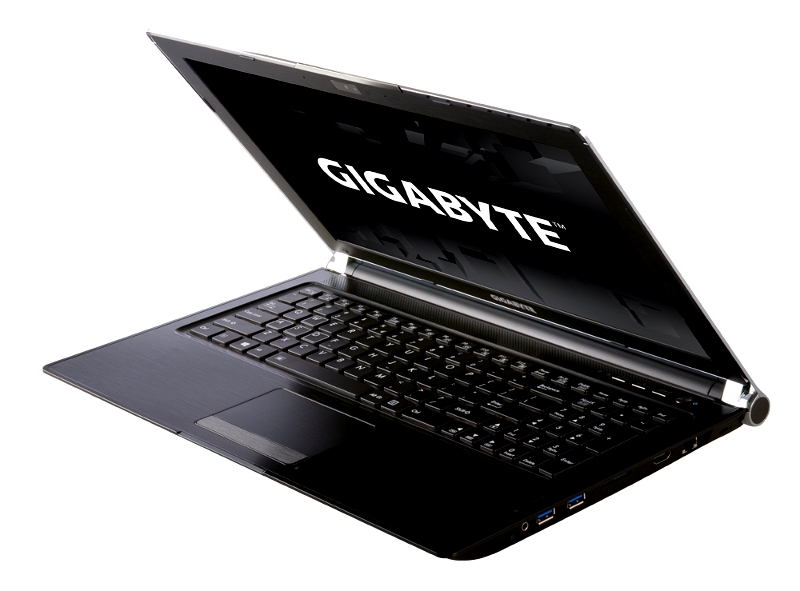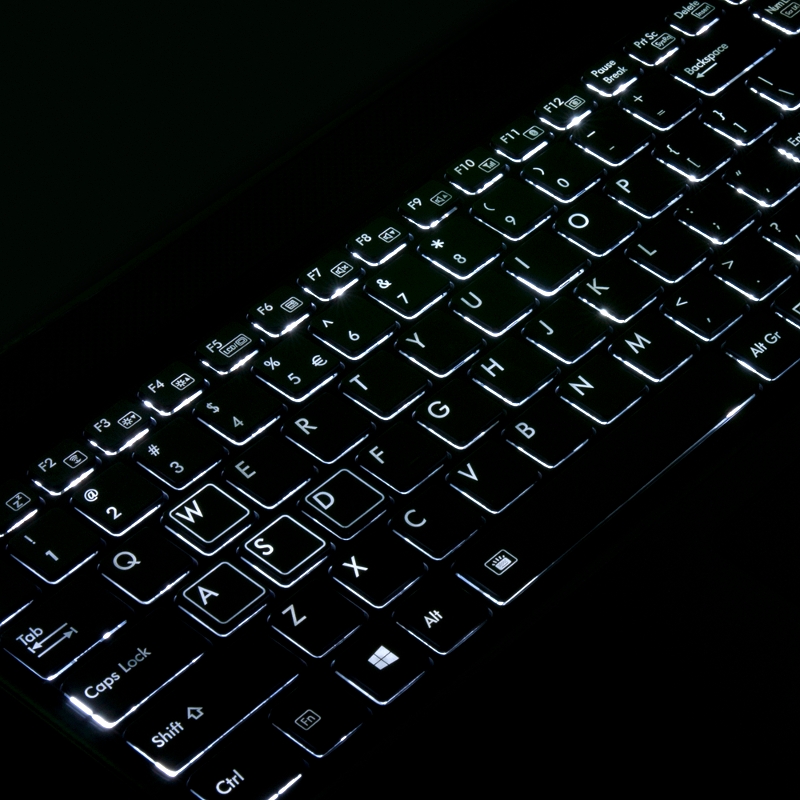Gigabyte P25X v2: A power portable that gives you a lot for your money [Review]

Ultra-portables, tablets, Ultrabooks and hybrids may be great feats of miniaturization, but if you want serious power a larger device will be a necessity. Anyone serious about the quality and resolution of their entertainment will need a desktop replacement of some sort. Gigabyte's P25X v2 is definitely in the latter camp, with its 15in chassis packed full of processing and graphics power. But its price isn't as hefty as its chassis.
The P25X v2 is not exactly subtle in its styling. It boasts a bright yellow lid with chrome effect edging and hinge, although the remainder of the system is a much more sober black. At 2.8kg, it's not exactly lightweight, although this is par for the course with the 15in chassis format.
The screen is 15.6in with a full HD resolution of 1,920 x 1,080. Although quite a few notebooks have now exceeded this, higher resolutions can cause problems with software compatibility, and we actually think full HD is about right for the screen size. The screen itself is sharp and bright with generally good viewing angles. Its matt finish means it isn't plagued by reflections in bright conditions, either.
This notebook's audio abilities are a little above average, too, with a subwoofer included as well as the primary speakers. There is still a lack in bass, but sound quality is an improvement over the weedy treble-dominated notebook norm.
The Chiclet-style keyboard has a slightly languid action, but is still responsive enough for reasonably comfortable typing. We're not so happy with the trackpad, which has been centrally placed on the wrist rest. With the numerical keypad on the right, this means the trackpad begins halfway across the spacebar, and we found it very easy to brush with the heel of our hand when touch typing.
This is clearly a system that is not too shy to shout about its abilities, and there is definitely plenty inside to shout about, too. The P25X v2 is based around an Intel Core i7-4810MQ, a 47W quad-core processor that runs at a nominal 2.8GHz. However, thanks to Turbo Boost, a single core can operate at 3.8GHz, and all four can hit 3.6GHz when sufficient cooling is available, although power draw rises to 55W.
Also, thanks to Hyper-Threading, the four physical cores present themselves as eight virtual ones, providing plenty of empowerment for multi-tasking and parallel processing. The processor was backed by a very healthy 16GB of 1,866MHz DDR3 SDRAM in our sample, which is the maximum possible for this system.

The processor also provides on-board graphics in the shape of Intel HD Graphics 4600, but this is only there for situations where limited 3D acceleration will be required. As soon as more taxing activities are detected, the discrete NVidia GeForce GTX 880M chipset will fire up, with its own 8GB of GDDR5 memory. This is NVidia’s top consumer mobile graphics chipset, with a whopping 1,536 CUDA cores running at 954MHz, and 160GB/sec memory bandwidth available. It supports DirectX 11.2, OpenGL 4.4 and OpenCL 1.1. There won't be any current game it can't handle at the system's native full HD resolution.
The main storage setup is also pretty hefty, too, with no less than three drives installed. Twin 128GB LiteOn LMT-128M6M SSDs have been configured as a RAID 0 array for the operating system and main applications, whilst a single 1TB Hitachi Travelstar 7K1000 conventional 7,200rpm hard disk is available for more general data storage and those really huge game content downloads. There's an optical drive included, too, in the shape of a Matshita BD-MLT UJ260 Blu-ray rewriter. So you will be able to watch Blu-ray HD movies, and even burn your own.

The usual complement of ports is available. The optical drive takes up most of the space on the left, but there's still VGA and a combined eSATA and USB 2.0 port, alongside the power connection. The right-hand side is where the majority of ports are to be found. There are microphone and headphone minijacks, with the latter doubling as an S/PDIF digital output. There are also two USB 3.0 ports, with one supporting Sleep and Charge. Then there's the SD Card reader, full-sized HDMI and wired Ethernet. Wireless provisions include the latest 802.11ac as well as b/g/n, plus Bluetooth 4.0. All in all, there's a good range of connectivity, with most options represented.

The P25X v2 is one of the fastest notebooks we have ever tested, and in some areas the fastest of all. The score of 7.8 in the rendering portion of Cinebench R11.5 is the highest we have ever seen, as is the 718 in the rendering portion of R15. The only systems we have reviewed that were faster than the P25X v2's 62.37 in R11.5's OpenGL are the Alienware M18x, the Dell Precision M6700, and the Scan 3XS MGW-20.

We haven't seen a system beat the 103.93 in R15's OpenGL test, although we have only been running this for a few months. The Alienware M18x is still the fastest system we've tested with Futuremark 3DMark11, but the P25X v2's 8,422 is a clear second, and it's the quickest with 3DMark's Firestrike 1.1, managing 5,463, although we didn't run this on the M18x.
So, unsurprisingly considering its target market, the P25X v2 is exemplary when it comes to 3D, and its everyday application performance is close to the top as well. It managed 3,671 in PC Mark 8's Home test and 4,463 in the Work test, which only Gigabyte's own Aorus X7 has bettered in our experience, although we have only been running this test for a few months.
Equally unsurprisingly, battery life is not stunning, but the P25X v2 still managed 202 minutes of PC Mark 8's Home test, whilst still achieving a score of 2,672, and it lasted 130 minutes of the intensive Battery Eater Pro. So you could still run the P25X v2 on its battery for a useful period, including when gaming, even if its size and endurance mean it's still very much a desktop replacement rather than being a true portable.
Verdict
The Gigabyte P25X v2 is undeniably a powerful beast. The design doesn't quite have the wow factor of an Alienware or Razer gaming laptop, but then you can pick this one up for under £1,500. Considering just how powerful it is, and the fact that it's not completely deskbound, then this starts to look like a very good deal indeed. If you're looking for a power portable, the Gigabyte P25X v2 gives you a lot for your money.
Good Points
- Excellent 2D and 3D performance
- 16GB of RAM
- Plenty of storage
- Keen price for the specification
Bad Points
- Poor trackpad placement
- Mediocre keyboard
Specifications
| Manufacturer and Model | Gigabyte P25X v2 |
| Processor | 2.8GHz Intel Core i7-4810MQ |
| RAM | 16GB 11866MHz DDR3L SDRAM |
| Graphics | Intel HD Graphics 4200 |
| Storage | 2 x 128GB LiteOn LMT-128M6M solid state disk plus 1TB Hitachi 7K1000 7,200rpm hard disk |
| Optical disc | Matshita BD-MLT UJ260 Blu-ray rewriter |
| Display | 15.6in LED backlit Wide Viewing Angle TFT with 1,920 x 1,080 pixels |
| Networking | 802.11b/g/n/ac Wi-Fi, Bluetooth 4.0, LTE/HSPA+ 4G mobile data, Gigabit |
| Interfaces | 2 x USB 3.0 (one sleep and charge), combo eSATA/USB 2.0, HDMI, VGA, combo headphone/S/PDIF, microphone, LAN, SD card reader |
| Width x Depth x Height | 392 x 263 x 38.3mm |
| Weight | 2.8kg |
| Warranty | 2 year global |
Published under license from ITProPortal.com, a Net Communities Ltd Publication. All rights reserved.